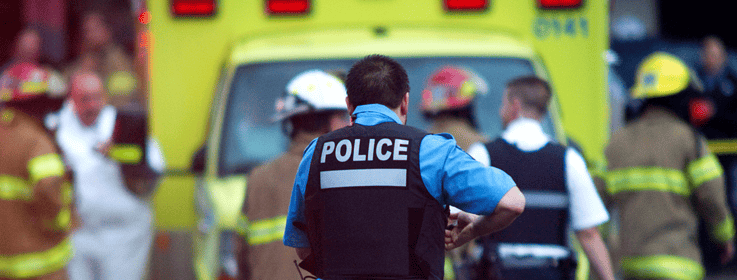
Long ago and far away nursing centers provided care for frail, elderly patients. There were no IVs, TPN, Cpaps, peritoneal dialysis, active shooters or emergency evacuations. Our biggest threat back then was probably scabies! Those were the days where we “hunkered down”, took what hits us, brushed ourselves off and moved on. Today we are much more enlightened and we should all be thankful for that!
In September, 2016 CMS released the new requirements for participation (RoP) regarding Disaster Preparedness with a mandate that every nursing center in the country be in compliance by November, 2017. There has been much discussion amongst providers from “it won’t happen” to “it can’t be done” however I’m here to tell you that “it will happen” and “it can be done”. How do I know? Well I don’t have a crystal ball however on June 2, 2017 CMS released the Interpretive Guidelines for the Emergency Preparedness requirements. Although it isn’t cast in stone, I can tell you that historically once the Interpretive Guidelines are released, the requirements are not going to be changed or repealed.
So what is your plan for preparing for the worst? There are so many details in the requirements that we are required to meet that it is no surprise providers are scrambling to be in compliance. Everyone take a deep breath, exhale slowly and say “ommmmm”. There is good news! Believe it or not many of us already have the majority of the requirement in place! We have transfer agreements, evacuation drills, emergency supplies, generators with increased capacity, volunteer networks to assist in emergencies, HITECH consultants for electronic oversight, etc. That said, one part of the requirement may be more challenging to manage, especially for providers in rural areas.
This part of the requirement states there must be a community wide disaster preparedness plan. This means including first responders, hospitals, law enforcement, staffing agencies, neighboring centers, etc. Additionally there is a requirement that transfer agreements be made with providers outside of the immediate area in the event a disaster affects a wide, local area. Challenging? Yes! Impossible? No!
The RoP outlines not only the requirement but also discusses exactly what needs to be in place, the documentation required and basically gives you a checklist for getting it done. Some examples of guidance include:
- Document efforts to contact state and local emergency planning authorities to engage in a collaborative plan
- Include this response process in the emergency plan
- Participate in a healthcare coalition as it may provide assistance in planning and addressing broader community needs
- Provide information regarding the facility’s needs and its ability to provide assistance to the local and State emergency management agencies
- Reporting the number of patients currently at the facility receiving treatment and care or the facility’s occupancy percentage
- The types of needs a facility may have during an emergency would include food, water, medical supplies, assistance with evacuation, transfers, etc.
Vulnerability is all around us, we need to be alert to changes in the environment, resident acuity needs and evacuation abilities. It is critical that we address these changes in updates to our emergency plan on a regular basis! Review your facility risk assessment to ensure it is comprehensive and addresses weather related “risks by region” (i.e., earthquakes on the west coast, tornadoes in the Midwest, etc.) as well as man made disasters (i.e., active shooter). Invite the local first responders into your center, give them a tour, prepare them for the “what if” by encouraging them to be familiar with the layout of your center as well as the resident population you care for and be sure to document your collaboration efforts!
AHCA/NCAL has taken an active role in providing guidance on the new RoP and interpretive guidelines and has some great resources available on their website. Other organizations including HealthCap RMS have been actively assisting and educating centers in preparing for the final rule. Reach out to your organizations and support each others’ disaster preparedness efforts. It wasn’t long ago that we were reading horror stories of Katrina’s aftermath; be prepared and in compliance, it is the right thing to do and you may just sleep better tonight!

